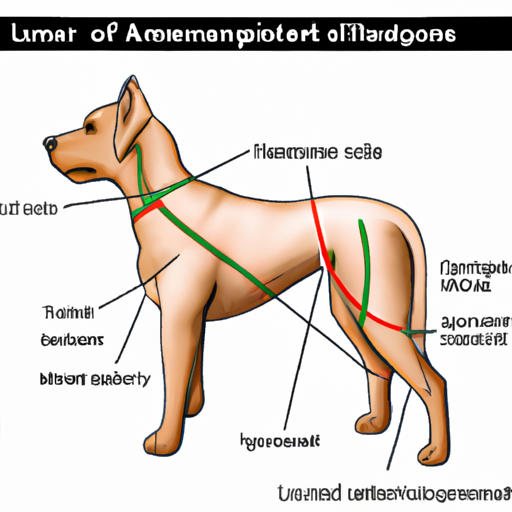“`markdown
Where Are Dogs Lymph Nodes Located?
Understanding Your Dog’s Lymphatic System
As a caregiver, you take on the crucial responsibility of looking out for your pooch’s health. As such, it’s essential to understand a little about their anatomy, specifically their lymphatic system. Just like humans, your dog’s lymphatic system plays a vital role in their immune response, helping to combat infections and diseases.
Five primary lymph nodes are:
- Submandibular lymph nodes (located beneath the jaw)
- Prescapular lymph nodes (found in front of the shoulder blades)
- Axillary lymph nodes (located in the armpits)
- Inguinal lymph nodes (found in the groin area)
- Popliteal lymph nodes (located behind the knee joints)
How to Check Your Dog’s Lymph Nodes
Being able to check your dog’s lymph nodes can be a valuable skill. This simple but effective method gives you a chance to detect any changes in your dog’s health early on.
- Step 1: Start by gently feeling your dog’s neck area. The submandibular lymph nodes should be small and barely noticeable.
- Step 2: Move your hands down to their armpit area. Here, you should feel the axillary lymph nodes.
- Step 3: Next, check the prescapular lymph nodes by feeling in front of their shoulder blades.
- Step 4: Lastly, check the popliteal lymph nodes located behind your dog’s knees.
Remember, these lymph nodes should feel relatively small, non-painful, and mobile.
Signs of Lymph Node Issues in Dogs
Now that you understand where your dog’s lymph nodes are and how to check them, you need to know what to look out for. Some signs of possible lymph node issues include:
- Swelling of the lymph nodes
- Loss of appetite
- Unexplained weight loss
- Lethargy
- Difficulty breathing
If you notice any of these symptoms, it’s essential to consult with your vet immediately.
Lymph Node Conditions in Dogs
There are several conditions that can affect your dog’s lymph nodes, such as lymphadenitis, lymphoma, and leukemia. Each condition presents its own unique challenges and treatment options. It’s crucial to remember, however, that early detection is key. The sooner you identify a problem, the better chances your furry friend has at a positive outcome.
Frequently Asked Questions (FAQs)
Q: How many lymph nodes do dogs have?
A: Dogs have hundreds of lymph nodes throughout their bodies. However, only a few are easily accessible for checking.
Q: Can swollen lymph nodes in dogs be harmless?
A: While some causes of lymph node swelling can be harmless, such as a reaction to an infection, it can also indicate serious conditions like cancer. Always consult your vet if you notice swelling.
Q: How are lymph node conditions in dogs treated?
A: Treatment depends on the underlying cause. This can range from antibiotics for an infection to chemotherapy for cancer.
Q: Should I check my dog’s lymph nodes regularly?
A: Yes, regular checks can help detect problems early and get your dog the care they need promptly.
“`



